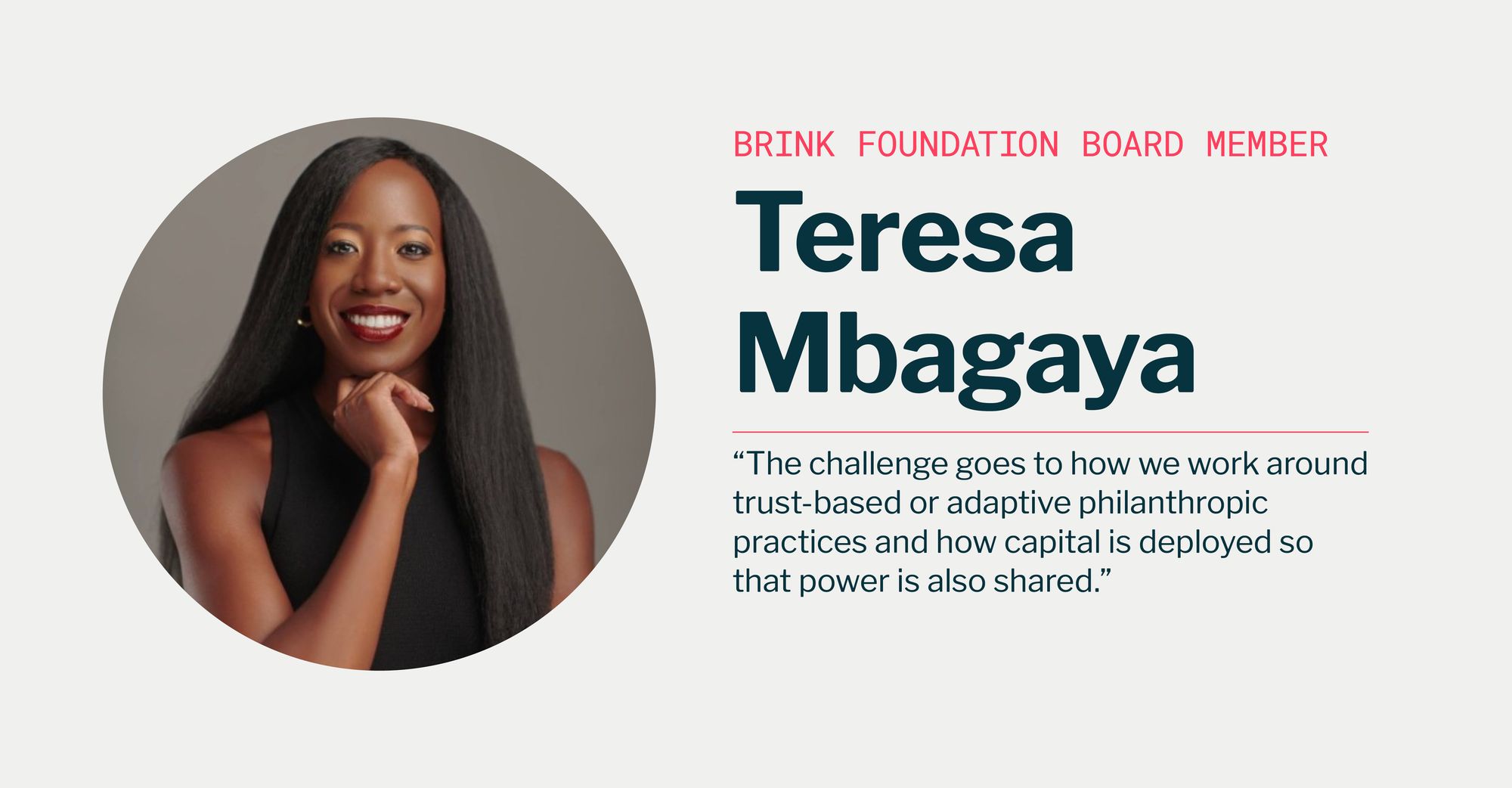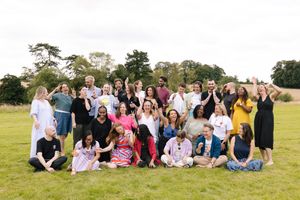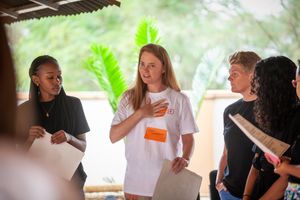

Ahead of the launch of Brink Foundation, we spoke with our founding Board Members to learn a little more about their backgrounds and experience, their ambitions for the future at the Foundation and what impact they hope to see our work having.
Teresa Mbagaya is an education leader, a child rights advocate and someone who is deeply passionate about youth potential. She describes her role as impact investor at the philanthropic investment firm, Imaginable Futures (as well as with Save The Children where she serves as a global board member) as “supporting and building solutions that impact young people, from education, to livelihoods”.
When we sat down with Teresa to talk about her role in the Brink Foundation, we started by asking her how she saw new forms of grant making and funding making an impact on global education poverty.
One of the things that is lacking in traditional development is catalysing more innovative, patient, and commercial capital, what we need is simply new forms of grant making in rethinking development.
“When you look at the developmental and social issues globally, there are some incredibly ambitious goals,” she responds. “One of the things that is lacking in traditional development is catalysing more innovative, patient, and commercial capital, what we need is simply new forms of grant making in rethinking development.”
For Teresa this means exploring ways to maximise outcomes and impact by inspiring more innovation, as well as working with communities to expand more sustainable market-based solutions and bring in capital in ways that may not traditionally have worked in the past. “This could be results-based financing,” she suggests, “or it could be aspects of blended financing, whatever is needed to really work in partnership with local communities to build the right solutions and have a fundamental impact at a global scale.“
Global development looks in the mirror
Teresa’s ambitions go beyond the ‘what’ of financing mechanisms. “For me, it’s also a question of how we work to establish more mechanisms for patient capital,” she explains. “It goes to how we embed trust-based or adaptive philanthropic practices, where capital is deployed, and how power is shared.”
Maybe unsurprisingly, given her experiences in the sector, Teresa sees a huge role for new modes of capital when it comes to shifting those power structures and incentives.
If you think about where the capital is coming from, there are some inherent power dynamics, and I think there’s a lack of trust built into that perceived hierarchy...
”My experience as a financier has shown me that strategy is often developed by donors and not the community,” she explains. “If you think about where the capital is coming from, there are some inherent power dynamics, and I think there’s a lack of trust built into that perceived hierarchy. So when we talk about models of capital that are more patient and more adaptive, I think what's really important is working from a mechanism of trust. How do we build trust with young people and with communities; and, how do we collaborate to create more sustainable models and more sustainable solutions.”
It’s Teresa’s conviction that ‘new capital’ can catalyse ways of working that will allow us to, as she puts it “look in the mirror at the face of philanthropy and global development and work to change some of those practices.”
Ambitions for the future
As for what that shift looks like in reality, Teresa has some concrete changes she would like to see happen in the immediate future. “Over the next five years I would love to see more support for proximate and female-led organisations, and more enterprises working and building with communities and young people,” she says. “I've always worked with young people, and I want to see mechanisms that allow for more young people to thrive, along with more agency for young women.”
“When I think of the evolution of the philanthropic sector, there's been quite a number of conversations around shifting power and what that means,” she continues, “and the fact that these conversations are happening and that a lot of organisations are working to understand their fund structures, practices , and bias, is certainly a move in the right direction.
“Things won't all get better at the same rate and there will be some backward movement,” Teresa says, “but I think there are some things that we know work well in the education sector and I’m curious about how we further more of that. Whether it's supporting educators and teachers, or funding more and more practices around ECD (early childhood development) and the first thousand days of a child's life, i.e. from the moment they are conceived until they reach the age of two. What’s important is how we expand on those things. How do we utilise private and commercial capital to really accelerate some of these market-based solutions?”
New partnerships
I find there is an opportunity to build new models of what healthy partnerships with grantees and with partners look like, and how that can accelerate impact.
When it comes to working with Brink Foundation, Teresa’s enthusiasm is palpable. “I think it's incredible to work with an organisation that is so innovative and human-centered,” she says. “And part of what I'm really excited about is going deeper in a multi-sectoral lens. I think that's going to be more and more important as we work on global development issues.“I find there is an opportunity to build new models of what healthy partnerships with grantees and with partners look like, and how that can accelerate impact. What I'm really keen to see is whether we can establish more models that can be replicated and not just in what, but in the hows of working and in partnerships, to really align patient capital to inspire, bold innovation and create meaningful impact.”
Read more about Brink Foundation.





